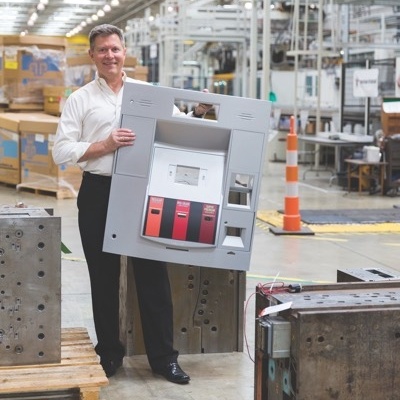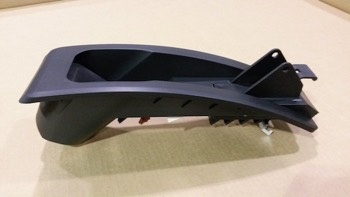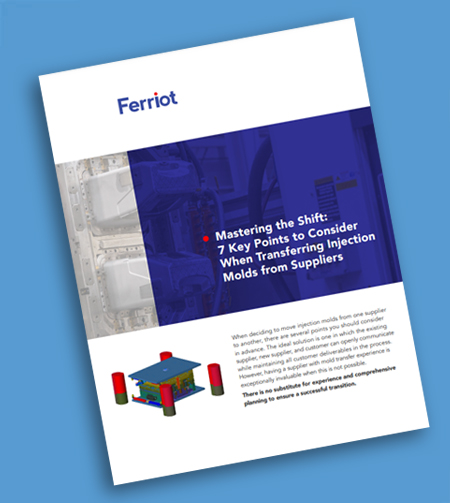What is the difference between Structural foam molding and traditional injection molding?
Here at Ferriot, we’ve been proud to be a leader in thermoplastic injection molding since the 1940s. Our clients turn to us for professional assistance with contract manufacturing, custom injection molding, painting and assembly. Structural foam molding is another capability we offer when traditional injection molding may not meet part design requirements. The structural foam process creates parts with a high strength-to-weight ratio and is often used for large parts and in metal to plastic replacement.
Traditional Injection Molding
Traditional injection molding is typically done in two stages. There’s an injection stage where melted thermoplastic is injected into a mold, and a packing stage where pressure is built and the plastic is formed into the shape of the mold. In structural foam molding, the injection stage is basically the same, but the packing stage is augmented by a chemical blowing agent mixed with the material. That chemical blowing agent is triggered by heat and expands the material by creating a microcellular structure at the core with an integral outer skin.
Advantages of Structural Foam Molding
A part built using structural foam molding offers a number of advantages that include:
- High strength-to-weight ratio
- Cellular core with integral skins
- Low stress in the part
- Reduction of sink marks
Structural foam parts generally weigh less and aren’t as dense as similar parts manufactured using other processes. The actual weight savings can vary, but parts built using structural foam molding can be 10% – 30% lighter than other parts. The integral skin contributes to added strength and the entire process creates parts with low stress.
 Structural foam molding also scales well, allowing large or bulky parts to be manufactured while still retaining the superior production speed offered by injection molding. Regardless of size, structural foam parts are able to be worked post-production in a manner similar to parts constructed of wood or metal. The surface of a finished part is smooth offering the potential of easy cleaning, and can be painted over.
Structural foam molding also scales well, allowing large or bulky parts to be manufactured while still retaining the superior production speed offered by injection molding. Regardless of size, structural foam parts are able to be worked post-production in a manner similar to parts constructed of wood or metal. The surface of a finished part is smooth offering the potential of easy cleaning, and can be painted over.
An additional benefit to parts manufactured using structural foam molding is part durability. As a result of the difference in process, parts built employing structural foam molding are sturdy while remaining rigid, and possess greater internal flexibility than parts built using traditional injection molding.
There are many ways to achieve cost savings when considering structural foam:
- Design flexibility allows for part consolidation – stronger, greater wall thickness, lighter weight
- There is great flexibility in resin selection as even commodity resins can be used
- The low pressure process allows large parts to be produced with low tonnage machines
- Converting a metal part to a plastic part can save weight and manufacturing cost
We’ve been busy putting structural foam molding through its paces to build a variety of parts, including gas pump front fascia. Results have been everything we could have hoped for. Along with the durability offered by the new parts, the material options available for structural foam molding also means a finished product can be chemical resistant, offer electrical or thermal insulation, and can be developed for outdoor applications.
Think structural foam molding is an alternative solution for you? We encourage you to contact us to discover how structural foam molding can benefit your business.
Learn more:





